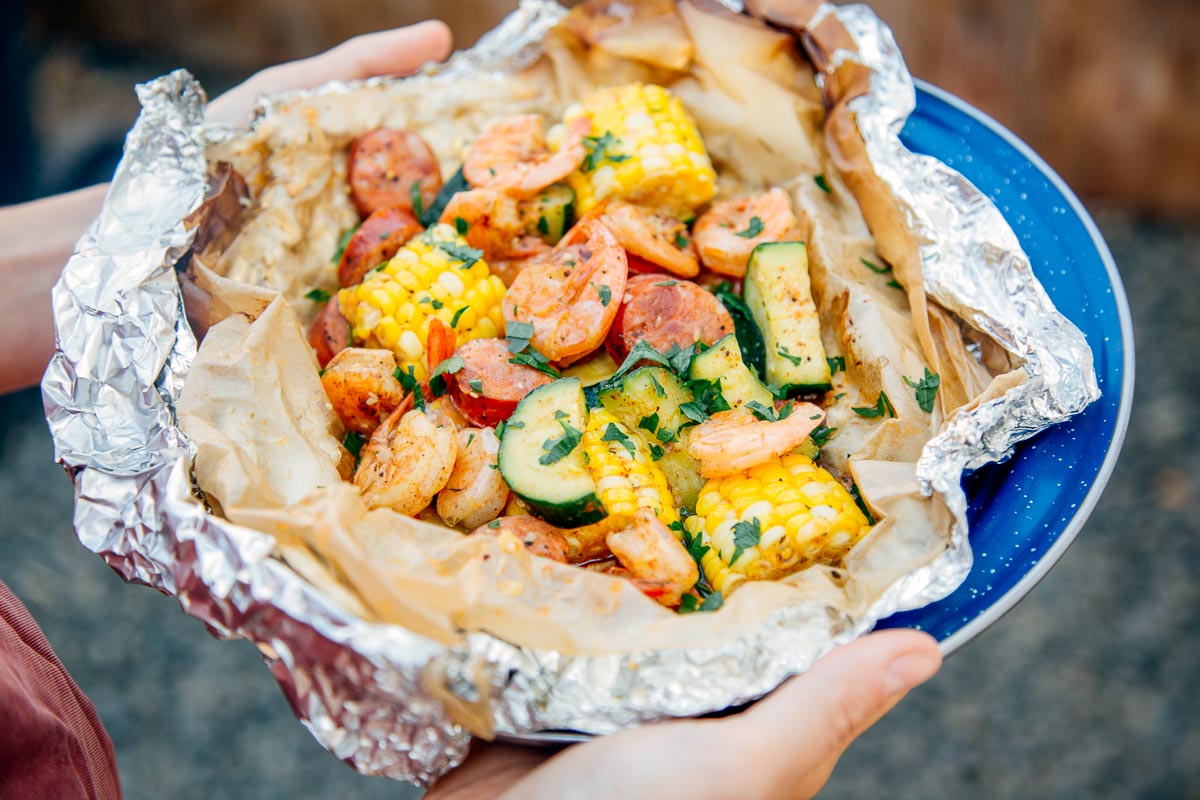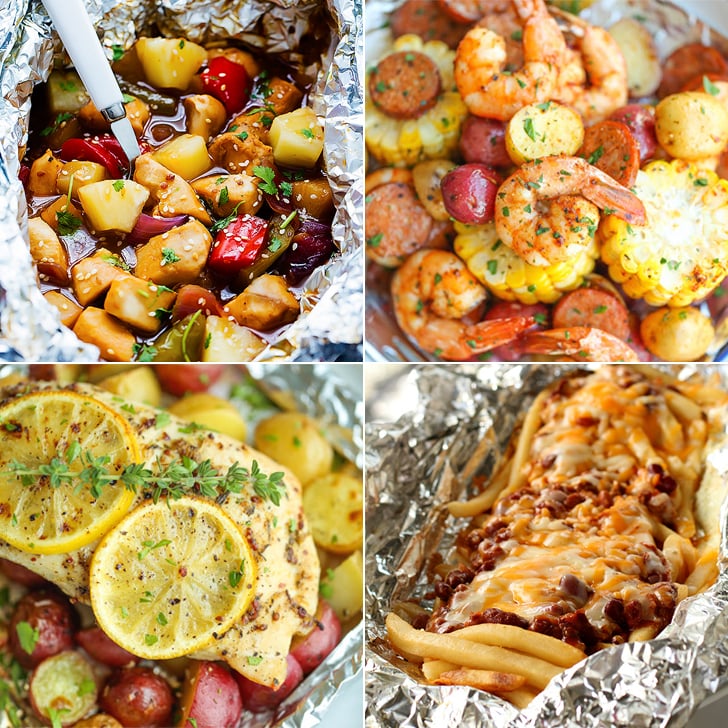Embark on a culinary adventure in the great outdoors with our comprehensive guide to the best food for camping. From essential provisions to calorie considerations, meal planning, and cooking techniques, we’ve got you covered for a satisfying and safe dining experience in nature.
Whether you’re a seasoned camper or a novice preparing for your first wilderness expedition, this guide will equip you with the knowledge and tips to choose, prepare, and enjoy delicious and nutritious meals while embracing the beauty of the natural world.
Camping Food Essentials: Best Food For Camping
When preparing for a camping trip, selecting nutritious and convenient food is essential for maintaining energy levels and overall well-being. The key principles include considering the duration and type of camping, as well as any dietary restrictions or preferences.
For backpacking trips, where weight and space are limited, lightweight and non-perishable foods are ideal. These include energy bars, trail mix, nuts, and dehydrated meals. For car camping, where weight is less of a concern, a wider variety of options is available, including fresh fruits, vegetables, and pre-cooked meals.
Dietary Restrictions and Preferences
It is important to consider any dietary restrictions or preferences when planning camping meals. For example, those with gluten intolerance may need to avoid foods containing wheat, rye, or barley. Vegetarians and vegans will require plant-based protein sources, such as beans, lentils, or tofu.
Calorie and Nutrient Considerations
When camping, calorie intake is crucial due to increased physical activity and exposure to the elements. The duration and intensity of your activities determine your calorie needs.
The following table provides recommended daily calorie intake ranges based on camping scenarios:
| Scenario | Calories |
|---|---|
| Light Activity (e.g., hiking, fishing) | 2,200-2,800 |
| Moderate Activity (e.g., backpacking, kayaking) | 2,800-3,500 |
| Strenuous Activity (e.g., mountaineering, rock climbing) | 3,500-4,500 |
Balancing macronutrients (carbohydrates, protein, and fat) is essential for sustained energy and well-being. Carbohydrates provide quick energy, protein aids in muscle recovery, and fat supplies long-lasting fuel.
Meal Planning and Preparation
Effective meal planning for camping requires considering factors such as group size, available cooking equipment, and storage space. Here are some strategies to ensure well-balanced and enjoyable meals while camping:
Sample Meal Plan
Consider the following sample meal plan for a group of four:
- Breakfast:Oatmeal with fruit and nuts, pancakes with syrup, or breakfast burritos
- Lunch:Sandwiches with deli meat, cheese, and vegetables, trail mix, or wraps with hummus and veggies
- Dinner:Grilled chicken or fish with roasted vegetables, pasta with marinara sauce, or campfire stew
- Snacks:Energy bars, granola, fruit, and nuts
Efficient Food Preparation
To streamline food preparation while camping, follow these tips:
- Plan meals ahead:This helps avoid last-minute grocery shopping and packing.
- Use pre-cut vegetables:Save time and effort by purchasing pre-cut vegetables.
- Cook in bulk:Prepare large batches of food to save time and energy later.
- Use disposable utensils:Minimize cleanup by using disposable plates, cups, and cutlery.
- Consider a portable grill:Grilling allows for easy and efficient cooking over an open flame.
Cooking Techniques
When cooking while camping, consider the following techniques:
- Foil packets:Wrap food in aluminum foil and cook it over the campfire or grill.
- Dutch oven:Use a Dutch oven for stews, soups, and baked goods.
- Campfire cooking:Cook food directly over the campfire using a grill grate or skewers.
Food Safety and Storage

Ensuring food safety while camping is paramount to prevent foodborne illnesses and maintain the quality of your provisions. Proper food handling, storage, and disposal are essential aspects of food safety that should be strictly adhered to.
To prevent foodborne illnesses, it is crucial to follow these guidelines:
- Wash your hands thoroughly with soap and water before and after handling food.
- Keep raw meat, poultry, and seafood separate from other foods.
- Cook food to the proper internal temperature to kill harmful bacteria.
- Refrigerate or store perishable foods in coolers with ice packs.
- Dispose of food waste properly in designated containers.
Appropriate Food Storage Methods
Appropriate food storage methods are essential to maintain food quality and prevent spoilage. Here are some key tips:
- Refrigeration:Keep perishable foods, such as meat, poultry, dairy products, and fruits, in a cooler with ice packs. Replace ice packs regularly to maintain a cold temperature.
- Coolers:Choose coolers that are well-insulated and large enough to accommodate your food and drinks. Use multiple coolers if necessary to separate different types of food.
- Airtight Containers:Store non-perishable foods, such as snacks, crackers, and granola bars, in airtight containers to protect them from moisture and pests.
Hydration and Water Treatment

Staying hydrated is crucial for overall well-being, especially during camping. Dehydration can lead to fatigue, headaches, and even more severe health issues. While camping, access to clean water may be limited, making it essential to understand potential water sources and water treatment methods.
Water Sources and Risks
Camping water sources can include rivers, lakes, streams, and springs. However, these sources may contain contaminants such as bacteria, viruses, or parasites. Consuming untreated water can lead to waterborne illnesses like giardiasis, cryptosporidiosis, and E. coli infection.
Cooking Equipment and Gear
Proper cooking equipment is essential for a successful camping trip. The right gear can make cooking meals easier, faster, and more enjoyable. The wrong gear can make it a chore.
When choosing cooking equipment, consider the following factors:
- The type of camping you’ll be doing.
- The number of people you’ll be cooking for.
- The types of meals you’ll be preparing.
- Your budget.
Stoves
Camp stoves come in a variety of shapes and sizes. The most common types are:
- Canister stovesare lightweight and easy to use. They use disposable fuel canisters, which can be purchased at most sporting goods stores.
- Liquid-fuel stovesare more powerful than canister stoves, but they are also more complex to use. They require a separate fuel bottle and a pump to pressurize the fuel.
- Wood-burning stovesare a great option for campers who want to cook over an open fire. They are relatively inexpensive and easy to use, but they can be difficult to light and control.
Pots and Pans, Best food for camping
When choosing pots and pans for camping, look for items that are lightweight and durable. Nonstick cookware is a good option because it makes cleanup easier.
The size and number of pots and pans you need will depend on the number of people you’ll be cooking for and the types of meals you’ll be preparing.
Utensils
A few essential utensils are a spatula, a spoon, a fork, and a knife. You may also want to bring a can opener, a cutting board, and a grater.
Fuel Sources
The type of fuel you use for your camp stove will depend on the type of stove you have. Canister stoves use disposable fuel canisters, while liquid-fuel stoves use a separate fuel bottle.
When choosing a fuel source, consider the following factors:
- Cost
- Availability
- Weight
- Ease of use
Backpacking Food Considerations
Backpacking food selection presents unique challenges due to the need to balance weight, nutrition, and ease of preparation. Lightweight and calorie-dense foods are essential for minimizing pack weight while providing sufficient energy for extended periods of hiking.
Lightweight and Calorie-Dense Food Options
*
-*Dehydrated meals
Pre-packaged meals that are lightweight and easy to prepare with hot water.
-
-*Trail mix
A combination of nuts, seeds, dried fruit, and granola that provides a mix of carbohydrates, protein, and healthy fats.
-*Energy bars
Calorie-dense bars that are convenient and provide a quick boost of energy.
-*Nuts and seeds
Rich in protein, healthy fats, and fiber.
-*Powdered milk
A lightweight source of protein and calcium.
Packing and Storing Food
To minimize weight and maintain freshness, consider the following strategies:*
-*Pack dense foods
Choose foods that have a high calorie-to-weight ratio.
-
-*Divide food into portions
Split meals into individual portions to avoid carrying excess food.
-*Use reusable containers
Avoid single-use packaging and opt for reusable containers that can be washed and reused.
-*Keep food dry
Store food in waterproof containers or bags to prevent spoilage.
Campfire Cooking Techniques

Embrace the allure of campfire cooking, an art form that transforms simple ingredients into culinary masterpieces. From classic grilling to innovative Dutch oven delights, explore a range of techniques to elevate your outdoor dining experience.
Mastering campfire cooking requires a blend of skill, safety, and creativity. Whether you’re a seasoned camper or a novice cook, these techniques will empower you to prepare delicious meals that will leave lasting memories.
Grilling Over an Open Fire
- Use a sturdy grill grate suspended over the coals.
- Season the grill with oil or butter to prevent sticking.
- Cook food over medium heat to prevent burning.
- Flip food regularly for even cooking.
- Remove food from the grill when it reaches the desired doneness.
Roasting on a Spit
- Choose a spit made of stainless steel or other non-reactive material.
- Marinate the meat overnight for added flavor.
- Secure the meat to the spit using skewers or twine.
- Roast the meat over medium heat, turning it regularly.
- Cook the meat until it reaches the desired internal temperature.
Dutch Oven Cooking
- Use a well-seasoned cast iron Dutch oven.
- Preheat the Dutch oven over the coals before adding food.
- Cook food over medium heat, stirring occasionally.
- Use a lid lifter to remove the lid safely.
- Experiment with a variety of recipes, from stews to cobblers.
Leave No Trace Principles
Adhering to Leave No Trace principles while camping is crucial to preserve the pristine nature of the wilderness. This includes proper management of food and waste to minimize our impact on the environment and wildlife.
Proper food disposal is essential. Pack out everything you pack in, including food scraps, packaging, and utensils. Avoid leaving food or waste unattended, as it can attract wildlife and create a nuisance. Use designated waste bins or containers, or carry out your waste in sealed bags until you find a proper disposal facility.
Campsite Sanitation
Maintaining a clean campsite is essential for both human and environmental health. Dispose of wastewater properly, and never pour it directly on the ground or into water bodies. Use designated latrines or dig a cathole at least 6-8 inches deep and 200 feet away from water sources.
Food and waste left behind can have detrimental effects on the environment. Food scraps can attract animals, leading to conflicts and potential harm. Waste can pollute water sources and soil, harming plant and animal life. By following Leave No Trace principles, we can help protect the delicate balance of the ecosystem and ensure that future generations can enjoy the beauty of the wilderness.
FAQ Resource
What are some essential food items for camping?
Non-perishable items like granola bars, trail mix, canned goods, and dried fruit are great options. Consider your dietary restrictions and preferences when selecting food.
How do I calculate my calorie needs while camping?
Activity level and duration play a role. A general guideline is 2,500-3,500 calories per day for moderate activity.
What are some tips for efficient food preparation while camping?
Plan meals ahead, use lightweight and compact cooking gear, and opt for easy-to-prepare dishes. Pre-cut vegetables and marinate meats before your trip.
How do I ensure food safety while camping?
Practice proper food handling, store food in airtight containers, and dispose of waste responsibly. Avoid consuming raw or undercooked meat.
